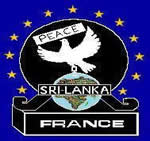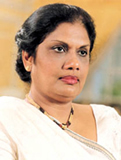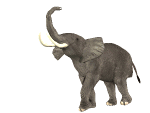The origins .......
The first traces of human life around the Xth millennium BC. But it is restored S. av. J.-C. Ceylan that enters history with the king Tissa (250-210), which, in its capital Anurãdhapura, introduced Buddhism. The rulers and monasteries create a system irriguation, among the most advanced in the ancient world. Threatened by the formation of powerful kingdoms Tamil cola (VIIè-thirteenth century) in southern India, Anurãdhapura monarchy is overthrown by King cola Rãjarãja (late Xè century). In 1070, Prince Sinhalese Vijayabahu reconquiert the island and established its capital in Polonnaruwa. Parãkramabãhu I (1153-1186) restores the prosperity of the kingdom. After the thirteenth century, the hydraulic system is degrading, the pressure becomes more cumbersome Tamil, Sinhalese population reflue to the wetland in the south. The Sinhalese and Tamil communities are thus separated, coming together Tamils in the Jaffna peninsula.
Attempts ....... Portuguese and Dutch (1505-1796) and the British establishment (1797-1948)
The Portuguese are from 1505 on the coasts, which already attending browsers Muslims. The Sinhalese constitute an independent kingdom whose capital is Kandy. His King promotes the installation of Dutch kill Portuguese (1658) and form a colony of Ceylon exploitation. La Grande-Bretagne annex the island (1796) and captured the kingdom of Kandy (1815). The British are coming from Southern India manpower Tamil and develop plantations (coffee, supplanted from 1870-1870 by tea). Since 1931, London attaches to Ceylon internal autonomy. Ceylon gained its independence in February 1948 as a member of the Commonwealth.
National Anthem
Sri Lanka Matha Apa Sri Lanka Namo Namo Namo Namo Matha Sundara siri barini surandi athi soba mana Lanka Dhanya dhanaya neka evil palathuru piri jaya bhoomiya Ramya Apa hata sapa siri setha sadhana jeevanaye matha Piliganumanu apa bhakthi pooja Namo Namo Matha Apa Sri Lanka Namo Namo Namo Namo Obave Matha vidya Obamaya apa apa apa sathya Obave Apa shakthi hada thula bhakthi Oba apa aloke Apage anu prane Oba apa jeevanave Apa mukthiya obave Nava jeevana demine nithina apa pubudu Karan matha Gnana veerya vadawamina ragana yanu mana jaya bhoomi kara Eka mawakage daru kala bawina Yamu yamu Prema wee nopama wada sama bheda dhurarada Namo Namo Matha Apa Sri Lanka Namo Namo Namo Namo Matha
English translation: Mother Lanka we worship Thee! Plenteous in prosperity, Thou, Beauteous in grace and love, Laden with corn and luscious fruit and fragrant flowers of radiant hue, Giver of life and all good things, Our land of joy and victory, Receive our grateful praise sublime, Lanka! We worship Thee. 2. Thou gavest us Knowledge and Truth, Thou art our strength and inward faith, Our divine light and sentient being, Breath of life and liberation. Grant us, bondage free, inspiration. Inspire us for ever. In wisdom and strength renewed, 3. will, hatred, strife all ended, enfolded in love, a mighty nation Marching onward, all as one, Lead us, Mother, to fullest freedom.
Lyrics and music by Ananda Samarakoon (1911 - 1962). Reported officially in 1952
National Day: February 4, 1948 (Anniversary of Independence)
Sri Lanka
|
|
codes ISO 3166 |
code |
|
Monnaie |
|
code
EDM |
code
ITU |
code
FIPS |
ISO
3c |
ISO
2c |
ISO
Internet
|
ISO
Nb |
immat.
véhic. |
code
olympique |
code
ISO 3c |
code
ISO Nb |
Préfixe
tél. |
Heure
GMT |
SRI |
CLN |
CE |
LKA |
LK |
.lk |
144 |
CL |
SRI |
LKR |
144 |
94 |
+5:30 |
code EDM : Etudiants Du Monde / Students of the World.
code ITU : International Communication Union.
code FIPS (FIPS 10-4) : code utilisé par le Gouvernement Américain.
codes ISO : International Organization for Standardization. |
Sri Lanka - Géographie physique
 |
 |
|
Superficie : |
65 610 Km2 |
 |
|
|
Eau : water |
1.3 % |
 |
|
|
Terres cultivées : |
29 % |
 |
|
|
Terres inexploitées : |
7 % |
 |
|
|
Forêts : |
30 % |
|


























